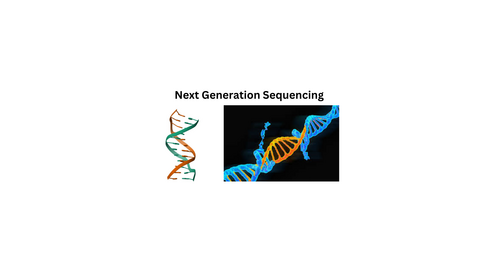Introduction to Next Generation Sequencing
Next Generation Sequencing (NGS) is a technique used for DNA, RNA and variant or mutation sequencing. This technique can sequence the whole genome, a large chunk of genes in a short period of time.Moreover, this technique is truly applied to detect a rare causative variant for a monogenic condition. Also, this technique helps to sequence a target selection of pre-specified genes, all expressed protein coding sequence in whole genome, and identifying the all intron and exons in the entire genome.NGS is widely used for disease diagnosis, prognosis, and therapeutic decision.
Steps of Next Generation Sequencing
DNA Fragmentation
DNA fragmented into the targeted DNA into many short segments. The length of this DNA fragment is usually 100–300 bp. Afterwards, the hybridization capture assay is done for the pulling out the small fragment of DNA. Furthermore, another can be used is amplicon assay for pulling the DNA fragments. The DNA segments are then used for the library preparation.
Library Preparation
DNA samples can have a sample specific index, this is done by modifying DNA fragments. This process allows the sequencing adaptors to add to the DNA fragment. This modification helps the sequencing primers to bind to all DNA segments.Lately, this will help to allow the parallel sequencing.
Sequencing
NGS sequencer helps to perform the parallel sequencing. The library is loaded on the sequencing matrix in a certain sequencer. This sequencing matrix varies to sequencer.
Data Interpretation
The data analysis is a process involving base calling, read alignment, identification and annotation. The reference sequence for the comparison is Human Genome.The information from each sequence segment is compiled to generate the full length of the target DNA.
Application of Next Generation Sequencing:-
1. It is used for identifying the genetic disease in the patients
2. The cancer genome projects will be finished with this technique
3. This identification of a new microbe will be a major help and also help in obtaining a patent
4. It will give a boost in family planning and identifying the potential risk of disease in the future generation.
5. It will help in precision medicine.
Limitations of Next Generation Sequencing:-
1. It requires a lot of investment in infrastructure and recruitment of skilled employees.
2. Major hussle is with the volume of data needed to manage and accurate reporting of that data.
3. Although a very cost effective technique, to make it cost effective, there is a need to run large batches of samples.
4. It is a time consuming and laborious process
5.There is no policy yet to fetch private public funding on a national level.

